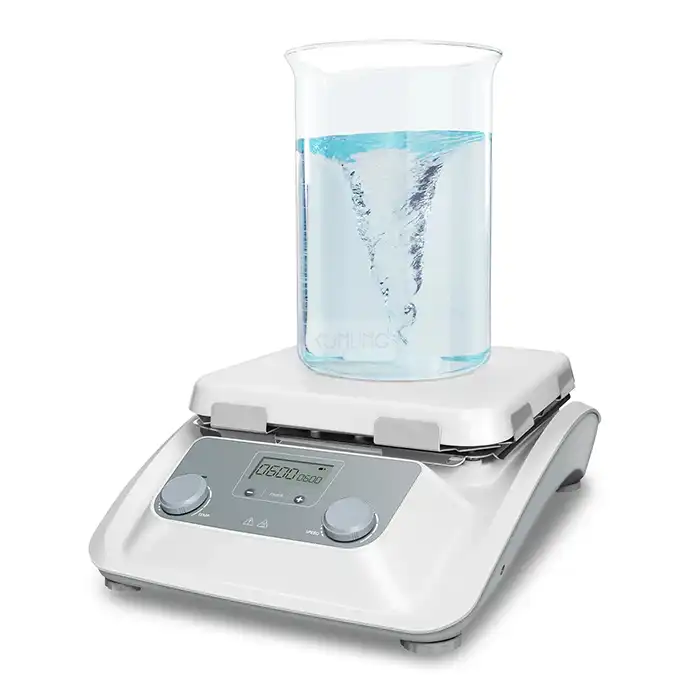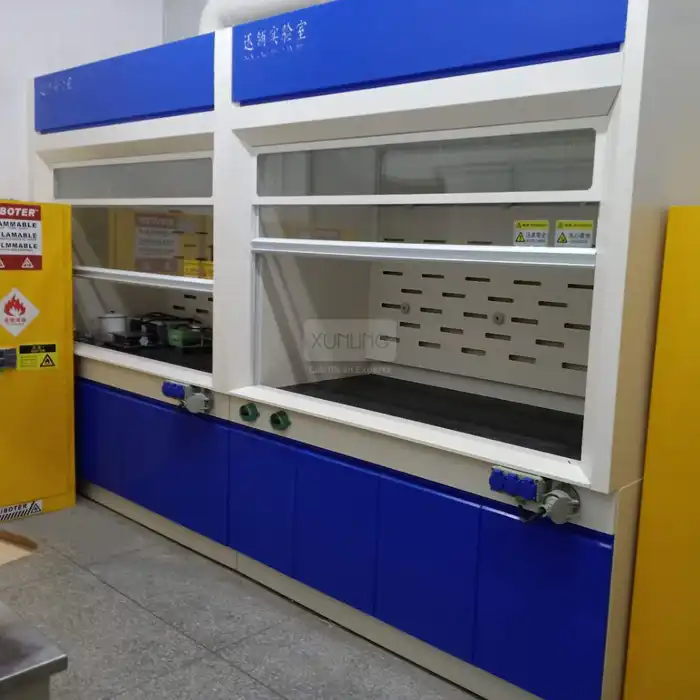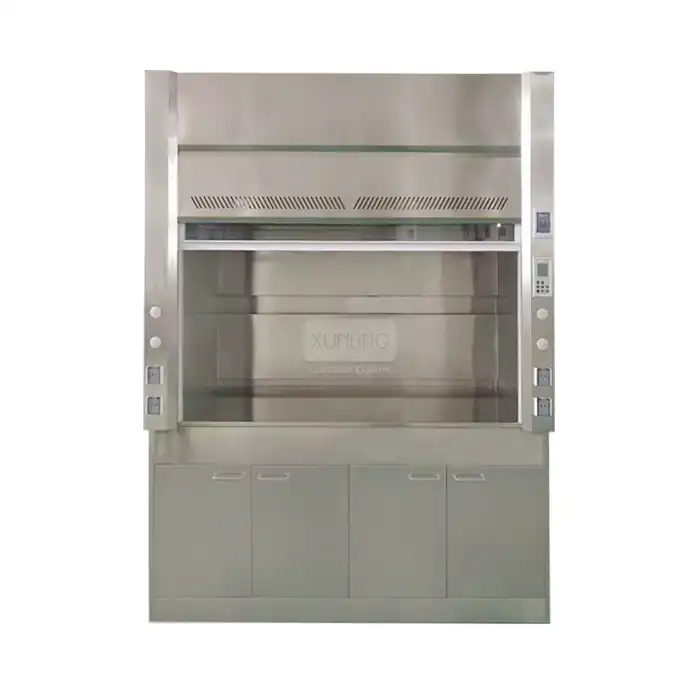
Chemical Dry Scrubbers: Achieve 99.9% Acid Gas Removal Without Wastewater Treatment
2025-09-29 09:00:02
In today's industrial landscape, environmental compliance and operational efficiency go hand in hand. Chemical Dry Scrubbers represent a revolutionary approach to air pollution control, offering exceptional performance in removing acidic gases from industrial exhaust streams without generating wastewater treatment requirements. These advanced systems utilize activated carbon technology and specialized sorbent materials to achieve remarkable removal efficiencies exceeding 99.9% for various acid gases including sulfur dioxide, hydrochloric acid, and other hazardous compounds. Unlike traditional wet scrubbing systems, chemical dry scrubbers eliminate the need for water usage and subsequent wastewater treatment processes, making them an environmentally sustainable and cost-effective solution for industries seeking to maintain strict environmental compliance while optimizing their operational costs.
Advanced Technology Behind 99.9% Acid Gas Removal Efficiency
Activated Carbon Adsorption Mechanism
The foundation of chemical dry scrubber effectiveness lies in the sophisticated activated carbon adsorption mechanism that enables superior pollutant capture rates. Dry scrubbing systems consist of two main sections or devices: the scrubber and the scrubber media, where very fine absorbents are sprayed into a vessel where they combine with flue gases. The activated carbon utilized in these systems features an extensive porous structure with developed micropores that create an enormous surface area for maximum contact with contaminated gas streams. When industrial exhaust containing acidic pollutants passes through the activated carbon bed, organic solvent molecules and acid gas compounds are efficiently captured through both physical and chemical adsorption processes. The high adsorption capacity results from the molecular-level interaction between pollutant molecules and the carbon surface, ensuring comprehensive removal of contaminants ranging from parts-per-million to sub-parts-per-million concentrations. This mechanism allows the chemical dry scrubber to maintain consistent performance across varying pollutant loads while delivering the promised 99.9% removal efficiency that industries require for environmental compliance.
Multi-Stage Filtration and Sorbent Injection Systems
Modern chemical dry scrubber systems incorporate multi-stage filtration technologies that work synergistically to maximize acid gas removal efficiency while maintaining optimal system performance. When particulate is co-present with acid gases and also must be removed, dry scrubbers and sorbent injection systems are typically ideal, with these exhaust gases often treated using a two-stage system. The first stage typically employs sorbent injection technology where specialized chemical reagents are introduced directly into the gas stream to neutralize acidic compounds through controlled chemical reactions. Following the initial treatment stage, the gas stream passes through high-efficiency baghouse filters that capture both the reacted sorbent particles and any remaining particulate matter. This dual-action approach ensures comprehensive pollutant removal while preventing system contamination and maintaining consistent operational performance. The baghouse filters utilize advanced fabric materials designed to withstand corrosive environments while providing exceptional particle capture efficiency, further enhancing the overall system effectiveness in achieving the target 99.9% acid gas removal rates.
Real-Time Monitoring and Control Systems
The achievement of consistent 99.9% acid gas removal efficiency requires sophisticated monitoring and control systems that continuously optimize scrubber performance based on real-time operating conditions. Advanced chemical dry scrubbers incorporate intelligent control algorithms that monitor gas flow rates, pollutant concentrations, temperature variations, and pressure differentials throughout the system. These monitoring systems utilize precision sensors and analytical instruments to detect minute changes in system performance, automatically adjusting sorbent injection rates, airflow distribution, and filter cleaning cycles to maintain optimal removal efficiency. Research has shown that removal efficiency for mixed gases can maintain as high as > 95% for HF, CH3COOH, HCl, HNO3, HNO2, and H2SO4 with inlet concentrations ranging from super-ppmv to sub-ppmv during extended operational periods. The integration of predictive maintenance algorithms further enhances system reliability by identifying potential issues before they impact performance, ensuring continuous operation at peak efficiency levels while minimizing unplanned downtime and maintenance costs.
Environmental Benefits of Water-Free Acid Gas Treatment
Elimination of Wastewater Generation and Treatment Requirements
The most significant environmental advantage of chemical dry scrubber technology lies in its complete elimination of wastewater generation, fundamentally transforming traditional approaches to industrial air pollution control. Conventional wet scrubbing systems require substantial water consumption and generate large volumes of contaminated wastewater that must undergo expensive treatment processes before safe discharge or disposal. Chemical dry scrubbers revolutionize this paradigm by utilizing solid sorbent materials that capture and neutralize acidic pollutants without any water usage, thereby eliminating the entire wastewater treatment infrastructure requirement. This water-free approach not only reduces environmental impact but also significantly lowers operational costs associated with water procurement, wastewater treatment chemicals, sludge disposal, and regulatory compliance monitoring. Industries implementing chemical dry scrubber technology can achieve their environmental objectives while simultaneously reducing their overall resource consumption footprint, making these systems particularly attractive for facilities located in water-scarce regions or areas with stringent wastewater discharge regulations.
Reduced Chemical Consumption and Waste Stream Management
Chemical dry scrubber systems demonstrate superior environmental performance through their optimized chemical consumption patterns and simplified waste stream management requirements compared to traditional treatment technologies. The process can achieve >99% SO2 and HCl removal efficiency and is available in a range of sizes, with single units capable of handling plants up to 300+ MW. The dry scrubbing process utilizes precisely controlled sorbent injection that maximizes chemical utilization efficiency while minimizing waste generation through stoichiometric optimization of neutralization reactions. Unlike wet systems that require continuous chemical replenishment and generate liquid waste streams requiring complex treatment processes, dry scrubbers produce solid waste products that are typically more stable and easier to handle, transport, and dispose of safely. Many of the solid reaction products from dry scrubbing processes can be beneficially reused in other industrial applications, such as cement manufacturing or road construction materials, further reducing the overall environmental impact and creating potential revenue streams from waste byproducts.
Energy Efficiency and Carbon Footprint Reduction
The energy efficiency characteristics of chemical dry scrubber systems contribute significantly to their environmental benefits by reducing overall facility carbon footprints and operational energy consumption. Dry scrubbing systems typically operate with lower pressure drops compared to wet scrubbing alternatives, resulting in reduced fan power requirements and lower electrical energy consumption for maintaining adequate airflow through the treatment system. The absence of water circulation pumps, cooling systems, and wastewater treatment equipment further reduces the overall energy demand of the pollution control infrastructure. Additionally, the elimination of water heating or cooling requirements in dry scrubber systems contributes to reduced thermal energy consumption, particularly important in facilities where temperature control is critical for optimal performance. The combination of these energy efficiency improvements, along with the reduced transportation requirements for chemicals and waste materials, results in a substantially lower carbon footprint for chemical dry scrubber installations compared to traditional wet scrubbing systems, supporting corporate sustainability initiatives and environmental compliance objectives.
Industrial Applications and Performance Optimization
Chemical and Pharmaceutical Industry Implementation
The chemical and pharmaceutical industries represent primary application areas for chemical dry scrubber technology due to their unique requirements for handling diverse acidic compounds and volatile organic compounds with exceptional removal efficiency. Chemical manufacturing facilities, particularly those involved in fertilizer production, acid manufacturing, and pesticide synthesis, generate complex gas streams containing multiple acidic species that require comprehensive treatment to meet environmental regulations. Acid gas scrubbers are custom-designed to provide removal efficiencies exceeding 99% for acid and toxic gases with low pressure drop. Pharmaceutical manufacturing processes often produce emissions containing both acid gases and organic solvents that must be removed simultaneously to prevent environmental contamination and protect worker safety. Chemical dry scrubbers excel in these applications by providing simultaneous removal of multiple pollutant types through their multi-mechanism treatment approach, combining activated carbon adsorption for organic compounds with chemical neutralization for acidic species. The ability to customize system configurations for specific pollutant profiles makes these systems particularly valuable for pharmaceutical facilities that may process different products with varying emission characteristics, ensuring consistent compliance across diverse operational scenarios.
Semiconductor and Electronics Manufacturing Applications
The semiconductor and electronics manufacturing industries have emerged as critical application areas for chemical dry scrubber technology due to their stringent requirements for handling highly toxic and corrosive gases used in various fabrication processes. Semiconductor fabrication facilities utilize numerous hazardous chemicals including hydrofluoric acid, ammonia, chlorine, and various metal-containing compounds that require exceptional removal efficiency to protect both environmental and worker safety. Chemical dry scrubbers provide ideal solutions for these applications because they can simultaneously handle the diverse range of chemical species present in semiconductor exhaust streams while maintaining the ultra-high removal efficiencies required by environmental regulations and industry standards. The compact design and modular construction of modern chemical dry scrubber systems make them particularly suitable for semiconductor facilities where space constraints and cleanroom requirements must be carefully considered. Additionally, the absence of water usage in dry scrubbing systems eliminates concerns about water contamination and disposal that are particularly important in semiconductor manufacturing environments where process water purity is critical for product quality.
Power Generation and Metal Processing Sector Benefits
Power generation facilities and metal processing operations represent significant application opportunities for chemical dry scrubber technology, particularly in addressing sulfur dioxide and hydrochloric acid emissions from combustion processes and metal refining operations. Coal-fired power plants and waste-to-energy facilities generate substantial quantities of acid gases that require efficient removal to meet increasingly stringent environmental regulations and air quality standards. Chemical dry scrubber systems provide excellent solutions for these applications by offering high removal efficiencies with lower maintenance requirements compared to wet systems, which are particularly susceptible to scaling and corrosion issues in high-temperature, high-particulate environments. Metal processing facilities, including smelting operations, electroplating facilities, and steel manufacturing plants, benefit from the robust design and chemical resistance of dry scrubber systems when handling corrosive gas streams containing hydrochloric acid, sulfur dioxide, and various metal compounds. The ability to operate effectively across wide temperature ranges while maintaining consistent performance makes chemical dry scrubbers particularly valuable for these industrial applications where process conditions can vary significantly based on production requirements and feed material characteristics.
Conclusion
Chemical dry scrubbers represent a paradigm shift in industrial air pollution control, delivering exceptional 99.9% acid gas removal efficiency without the environmental burden of wastewater treatment. This innovative technology combines advanced activated carbon adsorption, multi-stage filtration, and intelligent control systems to provide superior performance across diverse industrial applications while significantly reducing operational costs and environmental impact.
Ready to revolutionize your facility's air pollution control system? Xi'an Xunling Electronic Technology Co., Ltd. stands as your trusted China Chemical Dry Scrubber factory, offering comprehensive solutions as a leading China Chemical Dry Scrubber supplier and China Chemical Dry Scrubber manufacturer. Our China Chemical Dry Scrubber wholesale options provide exceptional value, while our Chemical Dry Scrubber for sale inventory ensures immediate availability. Contact Us today for competitive Chemical Dry Scrubber price quotes and discover our High Quality Chemical Dry Scrubber systems that deliver unmatched performance and reliability. With over 1,100 employees, 21 service centers, and 5 production bases, we provide fast delivery, 5-year warranty, custom-made solutions, and comprehensive one-stop service. Experience the difference of working with a professional laboratory equipment manufacturer committed to making your facility cleaner, safer, and more efficient. Reach out to us at xalabfurniture@163.com for detailed specifications and personalized consultation.
References
1. Environmental Protection Agency Control Cost Manual: Wet and Dry Scrubbers for Acid Gas Control - U.S. Environmental Protection Agency, Office of Air Quality Planning and Standards
2. Honeycomb Wet Scrubber for Acidic Gas Control: Modeling and Long-term Test Results - Chen, W.H., et al., Sustainable Environment Research
3. Air Pollution Control Technology Handbook - Buonicore, A.J. and Davis, W.T., CRC Press Environmental Engineering Series
4. Industrial Ventilation: A Manual of Recommended Practice for Design - American Conference of Governmental Industrial Hygienists Committee on Industrial Ventilation
YOU MAY LIKE







_1756090899038.jpg)
_1756093882793.jpg)
_1741166473547.webp)

_1735472430670.webp)




